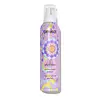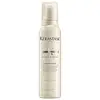What's inside
What's inside
 Key Ingredients
Key Ingredients

No key ingredients
 Benefits
Benefits

 Concerns
Concerns

 Ingredients Side-by-side
Ingredients Side-by-side

Water
Skin ConditioningButane
Propylene Glycol
HumectantPropane
Amp-Acrylates/Allyl Methacrylate Copolymer
Hippophae Rhamnoides Fruit/Seed Oil
AntimicrobialPEG-40 Hydrogenated Castor Oil
EmulsifyingVp/Acrylates/Lauryl Methacrylate Copolymer
Polysorbate 20
EmulsifyingLaureth-4
EmulsifyingPEG-8 Dimethicone
EmulsifyingAminomethyl Propanol
BufferingCeteth-10
EmulsifyingHydroxypropyl Starch Phosphate
Phenoxyethanol
PreservativeParfum
MaskingBenzyl Benzoate
AntimicrobialHydroxycitronellal
PerfumingLimonene
PerfumingCitronellol
PerfumingCoumarin
PerfumingWater, Butane, Propylene Glycol, Propane, Amp-Acrylates/Allyl Methacrylate Copolymer, Hippophae Rhamnoides Fruit/Seed Oil, PEG-40 Hydrogenated Castor Oil, Vp/Acrylates/Lauryl Methacrylate Copolymer, Polysorbate 20, Laureth-4, PEG-8 Dimethicone, Aminomethyl Propanol, Ceteth-10, Hydroxypropyl Starch Phosphate, Phenoxyethanol, Parfum, Benzyl Benzoate, Hydroxycitronellal, Limonene, Citronellol, Coumarin
Water
Skin ConditioningIsobutane
Propylene Glycol
HumectantPolyquaternium-4
Butane
Propane
PEG-40 Hydrogenated Castor Oil
EmulsifyingPhenoxyethanol
PreservativeLaureth-4
EmulsifyingCaprylyl Glycol
EmollientCalcium Pantothenate
Ethylhexyl Methoxycinnamate
UV AbsorberSafflower Glucoside
Arginine
MaskingGlutamic Acid
HumectantCetrimonium Chloride
AntimicrobialSerine
MaskingHexyl Cinnamal
PerfumingHydroxypropyltrimonium Hydrolyzed Wheat Protein
Skin ConditioningLinalool
PerfumingCitronellol
PerfumingAlpha-Isomethyl Ionone
PerfumingSodium Hyaluronate
Humectant2-Oleamido-1,3-Octadecanediol
Skin ConditioningGeraniol
PerfumingParfum
MaskingWater, Isobutane, Propylene Glycol, Polyquaternium-4, Butane, Propane, PEG-40 Hydrogenated Castor Oil, Phenoxyethanol, Laureth-4, Caprylyl Glycol, Calcium Pantothenate, Ethylhexyl Methoxycinnamate, Safflower Glucoside, Arginine, Glutamic Acid, Cetrimonium Chloride, Serine, Hexyl Cinnamal, Hydroxypropyltrimonium Hydrolyzed Wheat Protein, Linalool, Citronellol, Alpha-Isomethyl Ionone, Sodium Hyaluronate, 2-Oleamido-1,3-Octadecanediol, Geraniol, Parfum
 Reviews
Reviews

Ingredients Explained
These ingredients are found in both products.
Ingredients higher up in an ingredient list are typically present in a larger amount.
Butane is a gas derived from petroleum and natural gas. It is used as an aerosol propellant.
Citronellol is used to add fragrance/parfum to a product. It is often derived from plants such as roses. In fact, it can be found in many essential oils including geranium, lavender, neroli, and more. The scent of Citronellol is often described as "fresh, grassy, and citrus-like".
Since the Citronellol molecule is already unstable, Citronellol becomes irritating on the skin when exposed to air.
Citronellol is a modified terpene. Terpenes are unsaturated hydrocarbons found in plants. They make up the primary part of essential oils.
Citronellol is not able to be absorbed into deeper layers of the skin. It has low permeability,
Citronellol is also a natural insect repellent.
Learn more about CitronellolLaureth-4 is created by reacting ethylene oxide with Lauryl Alcohol. It is a surfactant and emulsifier.
Surfactants reduce the surface tension of ingredients so they can mix better. Emulsifiers prevent ingredients such as oil and water from separating.
Parfum is a catch-all term for an ingredient or more that is used to give a scent to products.
Also called "fragrance", this ingredient can be a blend of hundreds of chemicals or plant oils. This means every product with "fragrance" or "parfum" in the ingredients list is a different mixture.
For instance, Habanolide is a proprietary trade name for a specific aroma chemical. When used as a fragrance ingredient in cosmetics, most aroma chemicals fall under the broad labeling category of “FRAGRANCE” or “PARFUM” according to EU and US regulations.
The term 'parfum' or 'fragrance' is not regulated in many countries. In many cases, it is up to the brand to define this term.
For instance, many brands choose to label themselves as "fragrance-free" because they are not using synthetic fragrances. However, their products may still contain ingredients such as essential oils that are considered a fragrance by INCI standards.
One example is Calendula flower extract. Calendula is an essential oil that still imparts a scent or 'fragrance'.
Depending on the blend, the ingredients in the mixture can cause allergies and sensitivities on the skin. Some ingredients that are known EU allergens include linalool and citronellol.
Parfum can also be used to mask or cover an unpleasant scent.
The bottom line is: not all fragrances/parfum/ingredients are created equally. If you are worried about fragrances, we recommend taking a closer look at an ingredient. And of course, we always recommend speaking with a professional.
Learn more about ParfumPeg-40 Hydrogenated Castor Oil is derived from castor oil and polyethylene glycol (PEG). It is used as a emollient and emulsifier.
As an emulsifier, it helps prevent ingredients from separating. It also helps make the other ingredients more soluble; it is often used to solubilize fragrances. This increases spreadability and elongates shelf life in a product.
Emollients help soothe and soften the skin. They do this by creating a protective film on your skin. This barrier helps trap moisture and keeps your skin hydrated. Emollients may be effective at treating dry or itchy skin.
This ingredient may or may not be vegan, depending on the source.
Peg-40 Hydrogenated Castor Oil may not be fungal-acne safe. We recommend speaking with a professional if you have any questions or concerns.
Learn more about PEG-40 Hydrogenated Castor OilPhenoxyethanol is a preservative that has germicide, antimicrobial, and aromatic properties. Studies show that phenoxyethanol can prevent microbial growth. By itself, it has a scent that is similar to that of a rose.
It's often used in formulations along with Caprylyl Glycol to preserve the shelf life of products.
Propane is a gas derived from petroleum and natural gas. It is used as a propellant.
This ingredient is most commonly used in shaving cream, hair products, and makeup.
Propylene Glycol is an odorless, colorless liquid. As a humectant, it helps skin retain moisture. It also aids in delivering active ingredients.
Another role of this ingredient is preventing a product from melting or freezing. Propylene glycol also adds antimicrobrial properties to a product, elongating product lifespan.
This ingredient is considered an organic alcohol and commonly added into both cosmetics and foods.
Those with sensitive skin or conditions may develop a rash when using this ingredient.
Learn more about Propylene GlycolWater. It's the most common cosmetic ingredient of all. You'll usually see it at the top of ingredient lists, meaning that it makes up the largest part of the product.
So why is it so popular? Water most often acts as a solvent - this means that it helps dissolve other ingredients into the formulation.
You'll also recognize water as that liquid we all need to stay alive. If you see this, drink a glass of water. Stay hydrated!
Learn more about Water